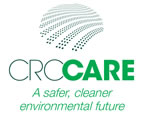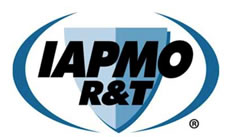|
A coalition of interested parties was formed to explore and possibly resolve the conundrum in human 1/2 life for perfluorooctanote (PFOA), which is reflected in differences in safe doses world-wide of 750-fold (Mikkonen et al., 2020). A recent paper has been submitted that addresses this conundrum in part (Dourson and Gadagbui, 2021). This collaboration started in April of 2021 with nominations to an advisory committee* who then led the coalition through a series of virtual and face-to-face meetings, with conclusions shown below. Toxicology Excellence for Risk Assessment (www.tera.org) has been designated as the nonprofit organization to support this coalition by the ARA Steering Committee (https://tera.org/Alliance%20for%20Risk/ARA_Steering_Committee.htm). Because TERA is a 501c3 nonprofit organization, all donations to this effort are tax deductible.
For interest in joining the coalition, please contact Michael Dourson at dourson@tera.org
*Advisory Committee:
- Harvey Clewell, Ramboll
- Tony Cox, Cox and Associates
- Michael Dourson, Toxicology Excellence for Risk Assessment
- Shannon Ethridge, International Association of Plumbing and Mechanical Officials
- Ali Hamade, Oregon Health Authority
- Ravi Naidu, Cooperative Research Centre for Contamination Assessment and Remediation of the Environment
- Nitin Verma, Chitkara University
Brief Communication Submitted to Regulatory Toxicology and Pharmacology: Click Here
*PFOA Human Half-life References: Click Here
Interactive Web-based and Email Discussion Click Here
Group Summaries
December 9th Summary - Click Here
Group One Summary - Click Here
Group Two Summary - Click Here
Group Three Summary - Click Here
-----
Notes of Sept 7/8 International Zoom-Call:
Present:
Jerry Campbell, Michael Dourson, Shannon Ethridge, Norman Forsberg, Bernard Gadagbui, Mahesh Gupta, Hamade Ali K, Ravi Naidu (CRCCARE),Nathan Pechacek, Robyn Prueitt, Andrew James Prussia (ATSDR/OAD/OIA), Lorenz Rhomberg, James Stanley Smith,CIV USN NAVMCPUBHLTHCEN PORS (USA), Nitin Verma
The primary purpose of the call was to share findings among 3 independent groups and ask questions to gain understanding, based on the specific charge to:
- Select studies from the current ARA list for further review and explain why certain studies were excluded; groups were free to add studies as appropriate and explain why they were added.
- Develop a group consensus on PFOA 1/2 life, discussing critical issues, such as, volume of distribution, 1/2 lives in different populations, and how uncertainty factors for experimental animal to human extrapolation and within human variability are affected; groups were free to add critical issues as appropriate.
Group Summaries and Notes:
- The three groups differed somewhat on the selection of studies for further review as found in these three group summaries (links to be found under Group Summeries on this page). Two groups focusing on a smaller selection of studies to gain an understanding of the average PFOA half life. Up to 26% bias in the half life was possible in studies with low serum PFOA levels due to unmeasured PFOA exposures, and an argument could be made for a 20% reduction in the average half life because of this problem. The remaining group preferred one study because of its carefully studied population although small, well established drinking water contamination and removal, similarity in the exposed group to controls, and subtraction of background PFOA level.
- The potential renal resorption limit is estimated as 12–24 uMoles (5 to 10 ug/ml), based on an estimated renal transporter Km of 5 μg/ml from this clinical study (ARA, 2021)*. All human observational studies were considered to be below this resorption limit as well as the low single dose of 50 mg in the Elcombe et al. (2013) study. Only patients with the higher weekly doses in the Elcombe et al. (2013) study were above this resorption limit making estimates of half life from this latter group of patients difficult.
- Three potential approaches can be used to determine the PFOA half-life. In no particular order these are:
- Find a high PFOA exposure; remove exposure, and then measure PFOA serum elimination. This is the common approach.
- If at all possible subtract out background. An example of where this was done is the Xu et al. (2020) study.
- Allow a sufficient time to measure serum decline; the longer the better. An example of this might be the Olsen et al. (2007) study.
- Start with a naive population, give PFOA, and measure the time it takes to achieve a steady state. Dividing this time by 5 approximates the half life. An example of this might be the Elcombe et al. (2013) clinical study.
- Determine a human volume of distribution at steady state and then observe the daily clearance of PFOA in the urine, assuming that it is not eliminated elsewhere. To date, very little human information is available on volume of distribution. However, see an attached analysis from the Elcombe et al. (2013) clinical study which estimates this value over time.
- Questions to consider in any work in this area:
- Rat and mouse clearance is based on much higher doses than that expected in humans. If rats or mice clear PFOA in a biphasic way as humans do, as demonstrated in the Elcombe et al. (2013) study, then a biphasic elimination in rats or mice might be expected. If so, are we comparing toxicokinetic parameters at the same phases between the experimental animal of choice and humans?
- Does plasma binding in humans keep PFOA from causing toxicity at expected concentrations?
- Clearance of mix-branch isomers of PFOA appear to be quicker than straight chain isomers. If so, do human observational studies account for this?
- PFOA elimination might be increased by more fiber in the diet. Might the large differences among half lives from human observational studies be a result of this?
Next Steps
Small groups will likely be meeting again to discuss presentations and discussions at this first call and perhaps develop a consensus around the given charge questions. We anticipate this second round of discussions to occur during late September or early October where an overall consensus will be attempted among these groups. We anticipate that this will be followed by a third round of discussions later in the fall with the broader interested community.
* Alliance for Risk Assessment (ARA). 2021. Beyond Science and Decisions: From Problem Formulation to Risk Assessment. Workshop XII. February 24 & 25, 2021
A VIRTUAL EVENT.
-----
Notes of May 26/27 International Zoom-Call: Advisory Committee for the ARA PFOA 1/2 Life Project
Present: Harvey Clewell, Tony Cox, Michael Dourson, Shannon Ethridge, Ali Hamade, Ravi Naidu, and Nitin Verma
Agenda items and notes:
- Involving other interested groups or scientists: ARA projects are an open “sandbox." Any interested scientist/manager is welcome to join. The Advisory Committee should feel free to "cast its net" widely.
- Procuring additional published papers: Committee members were requested to add relevant papers to the ones on the list available at https://tera.org/Alliance%20for%20Risk/Projects/PFOAref.html. These papers will form the basis of discussions for resolution of the relevant issues.
- Getting the work done: After a brief discussion, it was proposed to get the work done in the following manner:
- Form several groups of 3 or maybe 4 scientists who would independently review the list of relevant references during the summer and form some initial conclusions;
- Get these groups of scientists together for an initial discussion of conclusions likely in September, with the development of refined and/or consensus conclusions;
- Have an open meeting in October to discussed these refined and/or consensus conclusions where government authorities (and others) are invited to offer additional suggestions;
- Have an open meeting at the Society for Risk Analysis annual meeting in December to go over penultimate consensus conclusions and to receive additional suggestions for improvement;
- Submit findings to a journal for independent peer review and publication, or alternatively, conduct an independent peer review meeting.
- Many, if not all, of these meetings may be doable by zoom or webinar arrangements, so the overall cost above volunteered time may not be significant. Furthermore, zoom meetings might allow more government participation and avoid the hassles of travel reimbursement. However, part of getting this project done might also involve procuring donations. Outside groups, such as the Center for Truth in Science, could be approached for guidance.
- Good and Welfare: CRC Care will be have a large conference on PFAS chemistries in September of 2022.
Action Items: Advisory Committee members should...
- Send names and contact information for any scientist/manager potentially interested in this project to Michael Dourson to get on the weekly or biweekly email update. Committee members should feel free to forward these weekly or biweekly mails to anyone else that might be interested.
- Think of scientists who might be willing to work in small teams (3 or maybe 4 folks) to review the developing list of papers (current list athttps://tera.org/Alliance%20for%20Risk/Projects/PFOAref.html) and send these names to the rest of the team for further discussion.
- Identify critical issues associated with this project and send them to the rest of the team for further discussion.
——
Notes of June 15/16 International Conference Zoom Call
Present: Jerry Campbell (for Harvey Clewell), Tony Cox, Michael Dourson, Shannon Ethridge, Ali Hamade, Ravi Naidu, and Nitin Verma
Agenda items and notes:
- Discussion of small group nominees: Eleven nominations were received from a variety of sectors and varied expertise. After a brief discussion, all nominees, shown below, were accepted. Additional nominations would be welcome over the next week or so, and several members of the advisory committee will fill in as needed to create 4 groups of 4 folks each.
- Neeraja Erraguntla, American Chemistry Council
- Norman Forsberg, Arcadis
- Bernard Gadagbui, Toxicology Excellence for Risk Assessment
- Enoch Ledet, Product Assurance, LLC
- Marc Nascarella, Massachusetts Department of Public Health
- Nathan Pechack, Ecolab
- Tiago Severo Peixe, University of Londrina
- Robyn Pruitt, Gradient
- Mahesh Rachamalla, University of Saskatchewan
- Lorenz Rhomberg, Gradient
- James Smith, Navy and Marine Corps Public Health Center
- Charge to the working groups: The charge is to be simple and direct with a lot of lattitude given to small groups for their work. After some discussion, the charge was determined to be:
- Select studies from the current list for further review and explain why certain studies were excluded. Feel free to add studies as appropriate and explain why they were added.
- Develop a group consensus on PFOA 1/2 life, discussing critical issues, such as, volume of distribution, 1/2 lives in different populations, and how uncertainty factors for experimental animal to human extrapolation and within human variability are affected. Groups are free to add critical issues as appropriate.
- No inter-group discussions are allowed as to avoid premature closure.
- The deadline is August 31st for this first round of review.
- The second round of review will occur sometime in September/October for the purpose of forming a consensus among all 4 groups. Interested outside scientists and managers will be invited to participate.
- Round 3 is not yet envisioned although the Society for Risk Analysis annual meeting may be a good venue.
- Adding papers to the existing list: Several groups have analyzed the clinical study on PFOA by Elcombe et al. (2013), which was submitted as a patent application. The patent application was considered to be a good addition to the current list of papers. A marked version of this will be added to the list.
- A session at the Society for Risk Analysis session (in December, 2021) was considered to be a good venue for displaying the current version of this effort. A proposal will be considered by the June 30 deadline.
- Good and Welfare: The cicada invasion in the eastern US is waning. Australian has few if any COVID cases!
|
|
Project Contact:
Dr. Michael Doursoni
dourson@tera.org
Interested Partners:







|







